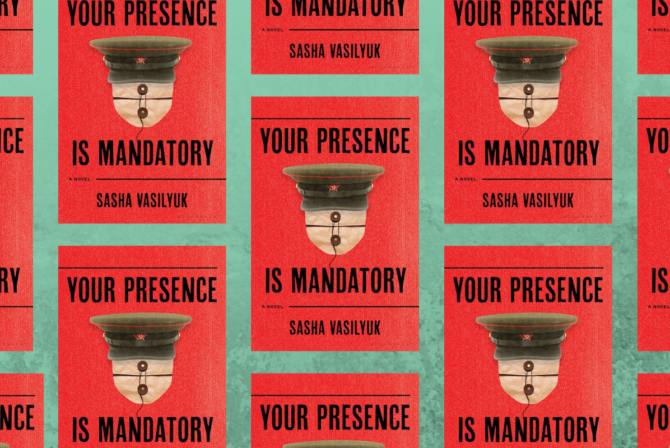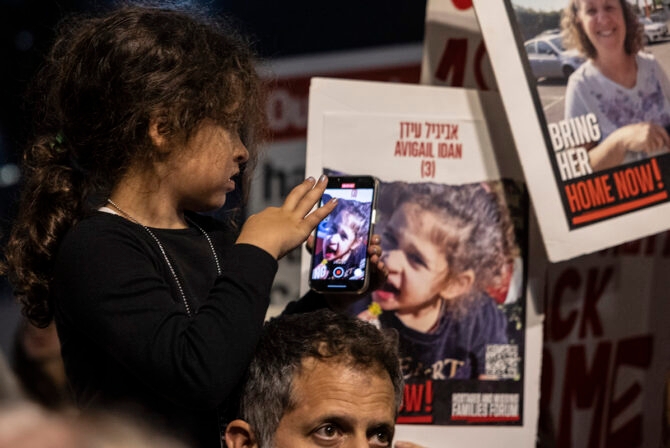The situation was getting out of control. We were living in a sea of children’s games and toys tucked into every nook and cranny of our cozy (read: too small) Tel Aviv apartment. Cupboards that were chock-a-block with games weren’t closing properly. We were up to our ears with Trash Pack Trashies, Bakugan Battle Brawlers, and Legos—and this was before Disney Tsum Tsums made their godforsaken entry into our lives.
And the kids, well, they just complained that they were bored. They didn’t see why they couldn’t play with the iPad or the iPhone or watch more TV. And why was it that they weren’t ever allowed to buy the ice creams with the toys inside? So not fair.
I’m a big believer in the “less is more” style of parenting, and all of these toys were beginning to really cramp my style. All year round it seems that kids in Israel are forever receiving gifts, whether it be for Purim, Passover, Rosh Hashanah, Sukkot, Hanukkah, end-of-year, beginning-of-summer, “How can Safta come empty-handed?” or just, “Here, you have a gift because it’s your brother’s birthday.”
The toys clearly had to go.
I handed my 7-year-old a garbage bag and told him to fill it with all the toys he no longer needs. It took him all of three minutes before he returned with the bag full to the brim—of his little brother’s toys. I handed my 3-year-old a bag and gave him the same instruction. This activity led to both kids passionately pulling apart their toy chests, only to get terribly sidetracked and rediscover pre-loved toys which they’d forgotten about, many of which had long ago lost vital parts and pieces. To my dismay, the second bag remained empty. Recognizing the futility of this mission, I took matters into my own hands. I decided we could personally deliver the toys to children who were in a less fortunate position than us.
Yes, this was surely going to be fun.
After some rounds of schlepping heavy boxes and bags to the car—with bags spilling over into the sidewalk, and me barking orders, and lots of come on, hurry ups, and the kids complaining about carrying heavy things, and me assuring them that they’re doing a good thing and it’ll be worth it, and them complaining some more about being hot, and dammit, why do we even need to be doing this? And what about an ice cream?—we finally made it.
Their whining was very suddenly cut short. They just stood there, wide-eyed and speechless inside the entrance to this African pirate daycare in South Tel Aviv, with no windows and no backyard. I had heard about pirate daycares, as they are known, but nothing could have prepared me for this. They are usually converted one- or two-bedroom homes in unsanitary conditions, with few and untrained staff, and very little in the way of food, toys, entertainment, or proper equipment, stuffed predominantly with West African children and babies of foreign workers and asylum seekers. Five infants died last year in the care of these daycares due to lack of safety oversight. My heart bleeds not only for the children who are raised here, but for the mothers who leave their children here not out of negligence but rather out of desperation.
A woman carrying one infant low on her back in a cloth wrap, and another in the front, greeted us with a warm smile. The place was brimming with at least 50 kids. Many of them wore clothing that didn’t seem to fit properly. Long pants were too short; sneakers were too large. The place was smaller than the size of our apartment.
The ominous silence that befell my kids was juxtaposed with the loud and excited shrills of the children who at once came running toward us. My 3-year-old cowered between my legs while clinging to my hand. My 7-year-old let go of the large box he was carrying and it hit the ground with a loud thud. Instantly and hungrily, kids began to rummage through the prized items that fell out, pouring over the treasures as if searching for gold. They squealed with delight. The woman thanked us profusely.
My 3-year-old started to cry and pulled on my arm, backing up against the door. He shouted out in no uncertain terms, “Mummy, I want to go now!” And just when I thought our mission here was accomplished and this would be the perfect cue for us to politely take our leave, my 7-year-old noticed a boy pull out from one of the boxes a large game that he had played with countless times before, and which he had loved very much.
That was of course the game I had put at the bottom of the pile for a reason. It was bulky and cumbersome and the reason why our cupboards didn’t close properly.
“Noooo! Not that one!” He gasped, and with tears running down his cheeks he bolted over to snatch the game from the eager hands of a skinny boy half his size. The boy burst into tears. A child on the other side of the room began to wail. A baby, somewhere, started crying. My 3-year-old decided to follow suit and launched himself into a full-blown tantrum. Within the space of a few seconds, literally, it was like our whole world had morphed into a cacophony of cries and screams. And if there’s anything less attractive than the sight of a child bawling, it’s the sight of about 10 children bawling, especially when two of them, the loudest of the lot, are your own.
My son was inconsolable. “Come now, honey, it’s just an old game,” I tried to comfort him. “No it’s not!” he retorted, spitting venom at me, a snot bubble rising out of his nostril, his red face a hot, wet mess. It’s amazing how unattractive your own kids can look at moments like these.
I had to pry the game out of his clammy grip and basically drag him out of there. My 3-year-old threw himself onto the pavement outside in one great dramatic hissy-fit over nothing particularly discernible. With nothing left to do, I lifted up my miserable brood and with one kid in each arm, we hurriedly made our way back to the car. I deeply regretted bringing them. I wondered if I had scarred them—and all the other kids—for life.
As I held the back seat door open, I was surprised to notice an army tank wedged in the side console—the one with the broken cannon that had been scribbled on with a permanent marker. My 7-year-old said it must have fallen out of the bag. He scooped it up quickly and his mood appeared to instantly lighten. As I was buckling up the little guy, I couldn’t help but spot a dinosaur tucked away behind his booster seat—a Triceratops missing a horn. And oh, hang on a minute, was that a mini Batman figurine on the floor? The one without a head and a missing foot?
“What is this?!” I asked. The sobbing immediately stopped. My 7-year-old quickly clutched the broken Batman and held it close to him, protectively.
“You said that we were going to find the toys a new home, where they would be loved and enjoyed by other kids that don’t have toys.” He swallowed hard, watching my pensive face to gage my reaction, before cautiously continuing.
“Yes, I did.”
“Well, just because a kid may not have toys, it doesn’t mean that he would enjoy any old toy, especially not a broken one. And besides, no one will ever really love them as much as I will.”
Here I was, flaring at the thought of my spoiled son trying to keep from giving away his silly toys to poor, needy, children who have nothing, and convinced that the whole exercise had been a waste of time, when in fact, what he had actually done was weed out the “bad” toys so that only the good ones would be donated. I was floored, overcome with a deep sense of satisfaction and pride.
It’s funny how a mere five-minute journey from home could feel like an eternity away.
But perhaps that was just because we took a slight detour and bought ice creams on the way home.
With the toys inside, of course.
Read More:
Sheryl Sandberg Discusses Women’s Silence in the Workplace
Electroconvulsive Therapy Saved My Life & Helped Me Be Myself Again
How to Help a Parent Whose Child is Suffering From Mental Illness







